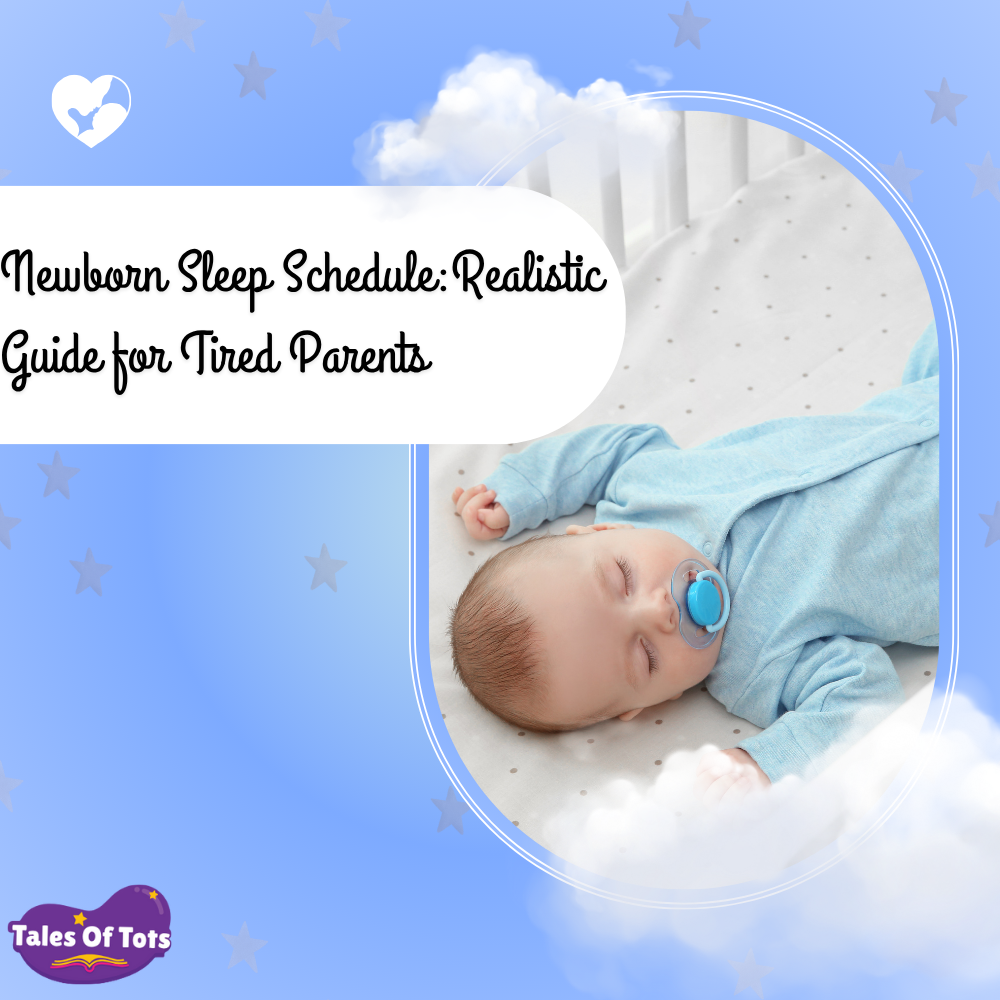By a fellow mom at Tales of Tots
Bringing your newborn home is a whirlwind of emotions—joy, love, and, let’s be honest, a fair share of nerves. One of the tasks that often feels daunting is giving your baby their first bath. Don’t worry; you’re not alone in feeling this way. Let’s walk through the process together, step by step.
When to Give Baby Their First Bath
Current guidelines recommend delaying your baby’s first bath until at least 24 hours after birth. This delay helps maintain body temperature, supports blood sugar levels, and promotes bonding and breastfeeding success. The World Health Organization (WHO) advises waiting at least 6 hours if a full day isn’t possible for cultural reasons. [Source]
Sponge Bath vs. Tub Bath
Until your baby’s umbilical cord stump falls off—usually within the first two weeks—stick to sponge baths to prevent infection. Once the stump has healed, you can transition to tub baths.
How Often Should You Bathe Your Newborn?
Newborns don’t need daily baths. Bathing 2-3 times a week is sufficient, as overbathing can dry out their delicate skin. In between, clean the diaper area thoroughly during changes. [Source]
Preparing for Bath Time
Gather all necessary supplies before starting:
- Soft washcloths
- Mild, fragrance-free baby soap and shampoo
- Clean towel (hooded towels are great)
- Clean diaper and clothes
- Small basin or baby bathtub
- Cup for rinsing
Ensure the room is warm (around 75°F or 24°C) to prevent your baby from getting cold. [Source]
Step-by-Step: Giving a Sponge Bath
- Lay your baby on a flat, comfortable surface, such as a padded changing table or bed, covered with a towel.
- Keep your baby wrapped in a towel, exposing only the parts you’re washing to keep them warm.
- Start with the face: Use a damp washcloth with water only—no soap—to gently wipe the eyes (from the inner corner outward), nose, and ears (avoid inserting anything into the ear canal).
- Wash the rest of the body: Use a small amount of mild soap on the washcloth to clean the neck, arms, chest, legs, and diaper area. Rinse with a clean, damp cloth.
- Wash the hair last: Gently massage a small amount of baby shampoo into the scalp and rinse carefully, shielding the eyes. [Source]
- Dry and dress your baby: Pat your baby dry with a clean towel, paying special attention to skin folds, and dress them promptly to keep them warm.
Step-by-Step: Giving a Tub Bath
Once the umbilical cord has healed:
- Fill the baby tub with 2-3 inches of warm water (about 100°F or 38°C). Always test the water temperature with your wrist or a bath thermometer. [Source]
- Undress your baby and gently lower them into the water, supporting the head and neck.
- Use a washcloth to clean the face and then the rest of the body, using mild soap sparingly.
- Rinse thoroughly with a cup of clean water, ensuring no soap residue remains.
- Lift your baby out of the tub, supporting their head and neck, and wrap them in a towel immediately.
- Dry and dress your baby as you would after a sponge bath.
Safety Tips
- Never leave your baby unattended during bath time, even for a moment.
- Keep one hand on your baby at all times.
- Use a non-slip mat in the tub to prevent slipping.
- Ensure all bath supplies are within reach before starting.
- Set your water heater to below 120°F (49°C) to prevent scalding. [Source]
Common Concerns
What if my baby cries during the bath? It’s normal for newborns to be fussy during baths. Keep the bath short, ensure the water is warm, and try to make the experience soothing by talking or singing softly.
Should I use lotion after the bath? Newborn skin is delicate and usually doesn’t require lotion. If the skin appears dry, consult your pediatrician before applying any products.
Final Thoughts
Bathing your newborn can be a bonding experience filled with tender moments. With preparation and practice, it will become a cherished part of your routine. Remember, every baby is different, and it’s okay to take the time to find what works best for you and your little one.
Disclaimer: This article is for informational purposes only and does not substitute professional medical advice. Always consult your pediatrician with any concerns about your baby’s health or care routines.
For more parenting tips and guides, visit Tales of Tots.



